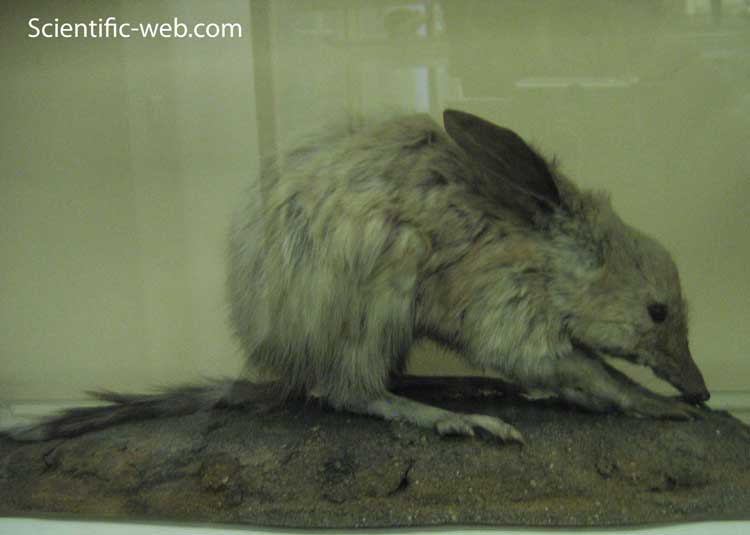Macrotis lagotis |
|
|

Greater Bilby (Macrotis lagotis), Photo: Michael Lahanas
Cladus: Eukaryota
Supergroup: Opisthokonta
Regnum: Animalia
Subregnum: Eumetazoa
Cladus: Bilateria
Cladus: Nephrozoa
Cladus: Deuterostomia
Phylum: Chordata
Subphylum: Vertebrata
Infraphylum: Gnathostomata
Superclassis: Tetrapoda
Classis: Mammalia
Subclassis: Theria
Infraclassis: Marsupialia
Ordo: Peramelemorphia
Familia: Thylacomyidae
Genus: Macrotis
Species: Macrotis lagotis
Name
Macrotis lagotis (Reid, 1837)
Type locality: Australia, Western Australia, Swan River
Synonyms
* Perameles lagotis Reid, 1837
References
* Macrotis lagotis on Mammal Species of the World.
Mammal Species of the World: A Taxonomic and Geographic Reference, 2 Volume Set edited by Don E. Wilson, DeeAnn M. Reeder
* Proc. Zool. Soc. Lond. 1836: 129 [1837].
Vernacular names
Internationalization
Česky: Bandikut králíkovitý
English: Greater Bilby
Magyar: Közönséges erszényesnyúl
日本語: ミミナガバンディクート
中文: 兔耳袋狸
----------
The Greater Bilby (Macrotis lagotis) is the largest of the bandicoots. At 1 to 2.4 kg, the male is about the same size as a rabbit; although male animals in good condition have been known to grow up to 3.7 kg in captivity. The female is smaller, and weighs around 0.8 to 1.1 kg. The Greater Bilby has an excellent sense of smell and sharp hearing. Its fur is blue-grey with patches of tan and it is very soft. The tail is black and white with a distinct crest. The Greater Bilby has strong forelimbs and thick claws, which it uses to dig for food and make burrows. Once widespread in arid, semi-arid and relatively fertile areas, the Greater Bilby is now restricted to arid wastelands and remains endangered. Feral cats are a major threat to the bilby's existence. The Greater Bilby is commonly known as just the Bilby, since the other bilby species (the Lesser Bilby) went extinct after 1932, probably around 1950. It is also known as the dalgyte in Western Australia and the pinkie in South Australia.
The Greater Bilby lives in arid areas of central Australia. It makes its home in a burrow that spirals down, making it hard for its predators to get in.
References
1. ^ Groves, C. (2005). Wilson, D. E., & Reeder, D. M. ed. Mammal Species of the World (3rd ed.). Baltimore: Johns Hopkins University Press. pp. 38. ISBN 0-801-88221-4. http://www.bucknell.edu/msw3.
2. ^ Friend, T., Morris, K. & van Weenen, J. (2008). Macrotis lagotis. In: IUCN 2008. IUCN Red List of Threatened Species. Downloaded on 28 December 2008. Database entry includes justification for why this species is listed as vulnerable
Source: Wikispecies, Wikipedia: All text is available under the terms of the GNU Free Documentation License

